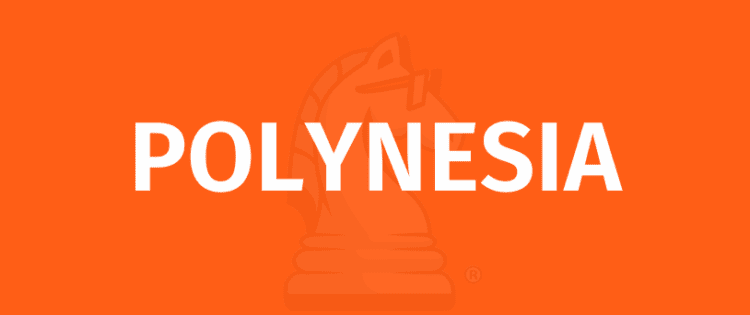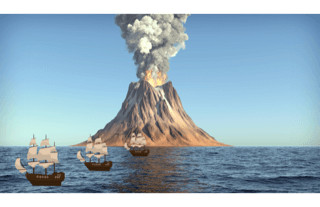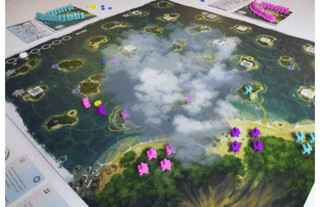
OBJECTIVE OF POLYNESIA: The objective of Polynesia is to score more points than any other player by traveling to islands that are worth more.
NUMBER OF PLAYERS: 2 to 4 Players
MATERIALS: 1 Game Board, 4 Player boards, 10 Lava Stones, 52 Tribe Members, 60 Boats, 30 Fish, 30 Shells, 1 Starting Player Token, 8 Resource Tokens, 14 Island Tokens, 10 Point Tokens, 18 Tide Cards, 4 Player Aids, 1 Phase Marker, 1 Cloth Bag, and Instructions
TYPE OF GAME: Network Building Board Game
AUDIENCE: Ages 12 and Up
OVERVIEW OF POLYNESIA
In Polynesia the players will act as leaders of tribes; tribes that need a strong leader in order to survive the things that are to come. The tremors in the ground and the changes in the clouds make it clear that there is no better time to escape the terrors that are to come. Players will lead their tribes along sea routes to different islands, searching for safety. Save as many of them as you can!

SETUP
To begin setup, place the map in the center of the playing area, ensuring that the side that is facing up corresponds to the number of players in the game. Every player will then choose a color and board to represent them throughout the course of the game. The Ships are placed in the Sea of the players’ boards, and then they will place their tribe. Eight of them are placed in spaces two to seven, and five are placed in the main island with the volcano.
The players will then collect their resources including three shells and three fish to form their reserve. The Island tokens are placed on the map randomly, face down. One green token should go on each island that is outlined, and one orange token on each of the islands with a hut. Once they have all been placed, they will flip the tokens to reveal them. If any of them have an X on them, then they are removed from the game.
Lava stones are placed in the bag together. The tide cards are organized by type, and each group is then shuffled independently. Place the placeholder on the third space of the Phase Track. The first player is randomly chosen by the group. The game is then ready to begin!
GAMEPLAY
Gameplay takes place over the course of numerous rounds, with each consisting of an action phase and a maintenance phase. During the action phase, the players will take their turns. Starting with the first player, and rotating clockwise around the group, each one of the players will complete an action. Once everyone has completed their actions, the first player will progress the Phase Marker further on the track one space.
The players may choose to explore, travel, or populate. Once the player completes their action, the next player will complete their chosen action. The same steps are completed three separate times until the Phase Marker progresses onto the volcano space. The Maintenance phase will then begin. The starting player will complete the Maintenance phase by resolving the different Phases.
These phases include the Volcano Eruption, which is resolved when the starting player removes a Lava Stone from the bag and places it on the Volcano. If it is grey, then nothing occurs. If it is Black, then two more Lava Stones are added. Finally, if it is the sixth red stone to be added to the volcano, then the game immediately comes to an end. If the game does not come to an end, the starting player will place the phase marker back at the beginning of the track, and a new round will begin.

END OF GAME
The game comes to an end when the last Red Lava Stone is removed from the bag. The volcano will then erupt, and the large island along with the three surrounding islands are lost to the sea. Any members of the players’ tribe that is remaining on those islands will be destroyed.
The players will then tally their scores by adding their accumulated points. Whoever has the most points, wins the game. If any number of players has the same number of points, then whoever has the most surviving tribe members, wins the game!
- 20 CLASSIC OUTDOOR GAMES FOR KIDS - January 3, 2023
- 10 FUN VIRTUAL GAMES THAT ARE PERFECT FOR GROUPS - October 5, 2022
- 35 BABY SHOWER GAMES - September 3, 2022